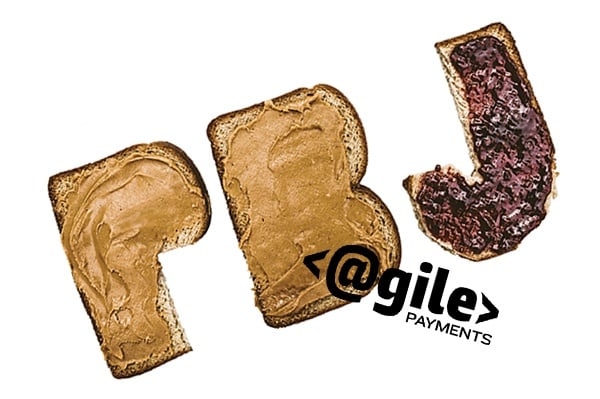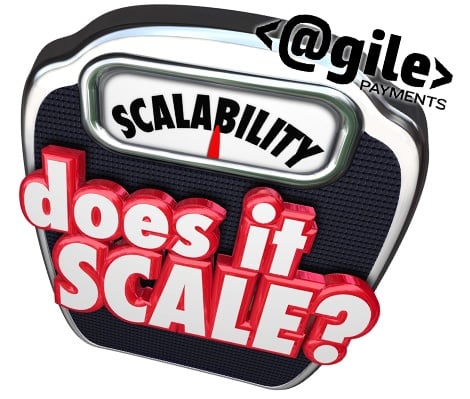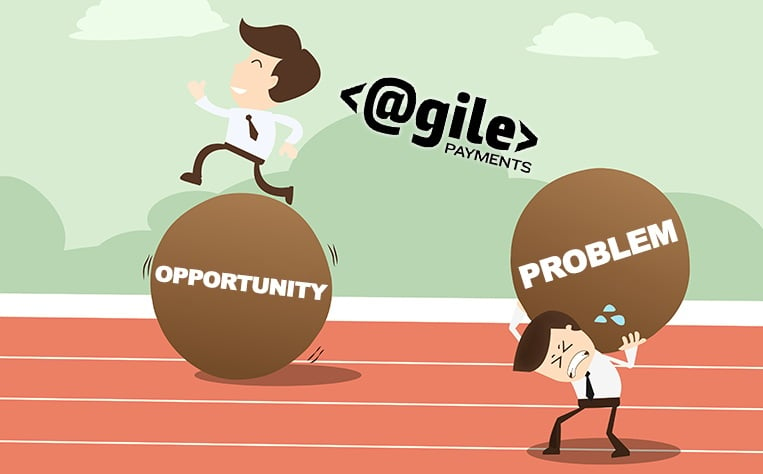So you wanna hear the good news or the bad news first regarding your SaaS service? Software as a service, SaaS or “cloud services,” are as common as peanut butter and jelly sandwiches anymore.
 So your prospects are pretty much used to the concept of paying a monthly fee for a service that makes their jobs easier.
So your prospects are pretty much used to the concept of paying a monthly fee for a service that makes their jobs easier.Let’s start with the good news.
SaaS services are more prevalent than ever in the business world. That prevalence should make your job selling your own SaaS far simpler.
The bad news?
It doesn’t.
As unbelievable as it would seem there are still hordes of prospects who hesitate and even object to using any type of SaaS. To close your prospects you’ll need to be empowered with the right answers.
 If you’re going to have any shot selling your SaaS product, you’ll need to be able to quickly overcome your prospect’s objections as fast as a ninja swats away flaming arrows.
If you’re going to have any shot selling your SaaS product, you’ll need to be able to quickly overcome your prospect’s objections as fast as a ninja swats away flaming arrows.Here at Agile Payments we work with SaaS providers every day helping them to integrate payment gateways into their services. So we have definitely learned a thing or two over the years on what objections usually keep B2B clients from purchasing.
You didn’t think we’d leave you hanging did you?
Of course we wouldn’t!
Here’s what we have learned so far:
Top 5 Objections to SaaS
Here are the top objections B2B customers possess in regard to using SaaS.
Your Service Is Too Expensive!
As with any product, expense will always be a concern.
 Some business owners watch every dime they spend like a hawk. By nature, these types of prospects look at each outgoing dollar as one which needs to bring them a return. What’s more is that they’re dead serious about it too.
Some business owners watch every dime they spend like a hawk. By nature, these types of prospects look at each outgoing dollar as one which needs to bring them a return. What’s more is that they’re dead serious about it too.In SaaS, many customers believe they are not getting enough for their investment. Not having a box to put on the shelf, a user’s manual to flip through or any other tangible product to touch often makes the buyer feel they are not gaining enough ownership for their dollar.
The key to understanding this objection is in understanding the people behind the objection.
Another common complaint regarding pricing is the expense your prospect will incur if they convert their existing system over to your software as a service. Your prospect will want to know if this extra expense will be worth it to them.
 In essence, SaaS does indeed save money for the companies that use them. You know it. We know it. The trick though is getting your prospects to figure it out.
In essence, SaaS does indeed save money for the companies that use them. You know it. We know it. The trick though is getting your prospects to figure it out.Gartner Research evidenced that 77 percent of all surveyed businesses will increase their SaaS spending.
How’s that for good news?
This coming increase is based upon their previous success in implementation and use of SaaS by those companies.
The truly engaged companies using SaaS are seeing benefit at a scale which encourages them to invest in the technical strategy more deeply, not to run from it.
Of those increasing their SaaS spend, many are expanding areas of use through new deployments. Others are enhancing and expanding existing use by increasing functionality.
Most businesses do recognize this trend and understand that SaaS is the right choice for their operations, going forward. Why do they acknowledge that SaaS is the right choice? That answer is that SaaS decreases expense, enhances efficiency, improves productivity and increases revenue.
SaaS was developed and continues to grow based upon three motivations:
- Agility
- Scalability
- Affordability
The affordability of SaaS is founded in its low implementation cost, efficiency and scalability. Additionally, internal resources are not tied up with upgrade deployment, technical issues, data security, hosting and other manpower issues.
So, fewer IT personnel are required to maintain cloud environment usage within their organization than are required for traditional software applications. Ease-of-use in regard to these things being fully handled by the SaaS company also cannot be overlooked.
Subscription Woes
In this era of pay-as-you-go services, many business leaders are intimidated by the idea of becoming locked into a subscription. Call it commitment phobia, perhaps. But, unlike a cable subscription or cellular plan, SaaS commitments are usually softer and more customer-friendly.
SaaS companies do rely heavily on recurring billing. This is part of their business model, their manner of being.
However, keeping a customer happy by allowing more levity in those subscriptions usually means potential for that customer to return. Through flexibility and some empowerment of the customer in their participation, more loyal participation results.
Underestimated Scalability
 SaaS is developed for scalability.
SaaS is developed for scalability.
True SaaS is limitless in its potential. SaaS, as an industry, has been developed and fine-tuned for scalability and customization to suit the customer’s precise needs, use and growth.
Ironically, many customers are turned off by SaaS because they believe it to not be scalable enough for their specific needs. Many companies perceive SaaS as being for startups or brands that cannot afford “real” solutions and application ownership.
An overwhelming percentage of successful brands use SaaS. In fact, many have used SaaS to become successful, in the first place. Of the Fortune 50, 47 brands are utilizing SaaS solutions. That is 94 percent usage by the most successful companies in the country.
Security Concerns
On today’s information technology landscape, concern of security is valid.
Halon Security Survey of 2014 reported that 79 percent of Americans are skeptical of cloud security.
Among business influencers, the same skepticism reigns supreme. 86 percent of business leaders don’t trust the cloud for security of sensitive data, according to the same Halon survey. Of those leaders, only 12 percent trust cloud use for their data in security from loss, corruption or unauthorized access.
Where a change of mindset from fear to advocacy occurs is in actual users of cloud SaaS solutions.
 It is true that hackers love breaking into known brands and those where large collections of sensitive data are stored. This has caused a phobia of cloud based programs for the masses.
It is true that hackers love breaking into known brands and those where large collections of sensitive data are stored. This has caused a phobia of cloud based programs for the masses.Those actual users trust SaaS with their data, due to the level of security and care exhibited by those solutions.
In fact, 94 percent of current users of SaaS reported to Halon that the cloud provides better security than their internal, on-premises IT team could, including modernity of the systems and advancement of antivirus and spam management.
It is in ongoing use that users begin to really appreciate the level of security provided by SaaS. Most SaaS solutions prove themselves secure through audit participation, data center use, encryption and other layers of security needed to ensure data is kept private.
Because dedicated teams develop, manage and maintain SaaS solutions, constant vigil over potential breaches is maintained. This is a higher level of attention than an internal team could be capable of or provide.
Beyond security from attack is security from disaster and other potential loss. Data centers are consistently backing up customer data and ensuring security from such loss.
Desire for Customization
Companies with specific needs tend to believe that a proprietary path is their best option.
Many are steadfast in this and seek to build a team of internal developers, in lieu of attempting use of SaaS.
 Once upon a time, early in the life of cloud solutions, customization was not mainstream. However, as vendors innovated means of providing greater customization of SaaS products, SaaS products in turn became more supportive of these customizations.
Once upon a time, early in the life of cloud solutions, customization was not mainstream. However, as vendors innovated means of providing greater customization of SaaS products, SaaS products in turn became more supportive of these customizations.However, customization is part of SaaS’s appeal. As NetSuite’s CEO Zach Nelson believes, customization is critical for present and future SaaS providers. After all, users of SaaS are often entrepreneurial by nature and want the same innovative approach which built their brand indicated in their SaaS.
SaaS products allow vendors to create APIs for integration of multiple solutions into a working web tying ERPs, CRMs and other SaaS providers together. Through this innovative, collaborative spirit, better SaaS products with unlimited customization potential have been developed.
Overcoming Objections
 Now that the most common objections are clear, how are you going to overcome them?
Now that the most common objections are clear, how are you going to overcome them?
To merely respond to these concerns as they arise during sales activity is ineffective. In order to truly empower your customers toward effective decision making in regard to SaaS, content is king.
Customers no longer reach out to a vendor for the vendor to sell to them. Today’s customer convinces him or herself of the justification of a product before making that first contact.
They research your offerings before even talking to you.
In today’s market, there is no denying that customers want answers to their questions before approaching the brand. They have already shopped around and decided which product holds their interest as the best solution, or at least a few top choices, before you even know the customer exists.
Steve Patrizi, Head of Partner Marketing at Pinterest says that B2B buyers have completed 70 percent of the decision-making process before reaching out to a salesperson for the first time.
But, how are customers gaining their decision-making knowledge?
 This knowledge is coming from content.
This knowledge is coming from content.
If the research is not provided by your content, then customers are acquiring information through third parties.
Which is better, for your customer to learn about you from competitors and others not associated with you, or for your customer to learn about you directly from you?
Today’s SaaS brands are as much in the content marketing game as they are in business to develop cloud applications.
In order to effectively sell your SaaS solutions, your company must approach content with as much vigor as your development team approaches their innovations.
Through great content, there is even less need for you to hire salespeople.
How does content help during the sales life cycle?
Through provision of concise and informative text, customers gain knowledge they need for first deciding if your SaaS solution might meet their needs.
Also through content, their objections are overcome, these five primary objections most commonly voiced by customers of SaaS.
Once the objections are overcome, a warmer customer is then primed for the sale through subtle, content-driven enhancement and validation of their decision as the right one. They are encouraged more deeply into the sales process through supplementation of their own knowledge about your offerings. The customer sees you less as a brand selling a product and more as an ally in alleviation of their concerns and advancement of their interests.
No longer is SaaS a fledgling approach to technological needs of business.
SaaS is mainstream, widespread and a fully capable means of building customer business efficiently, with scalability and affordability.
By providing clear answers to top customer objections about SaaS through content before those customers even contact you, you are facilitating higher quality lead generation.
Those prospects then enter your sales funnel at a deeper level, more ready for implementation of your SaaS product as the right solution for their company’s needs.
That’s how we see it over here at Agile Payments at least. If you think we missed anything on this post we should have included please let us know by posting below in the comment section!
{{cta(‘0f8b0526-7dc0-4233-bd99-4282964e7dfc’)}}




